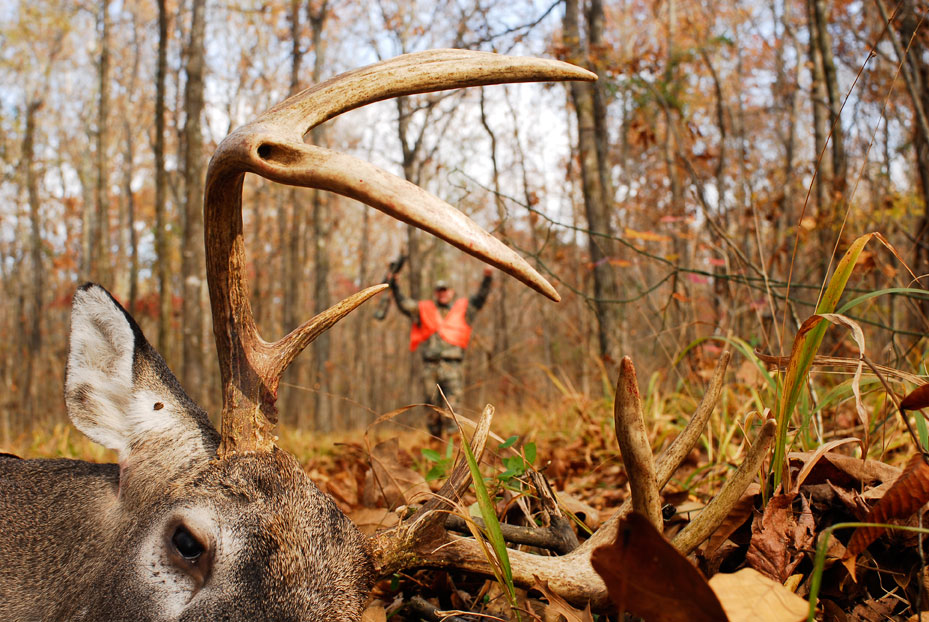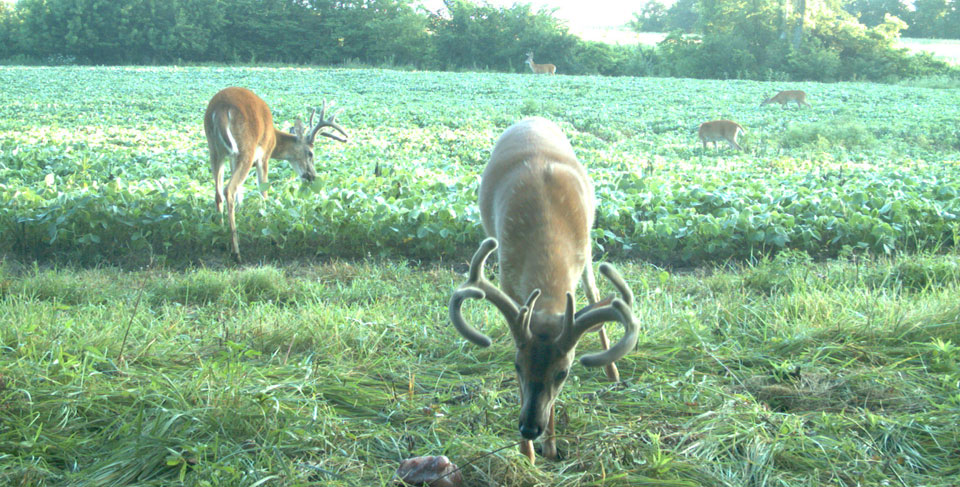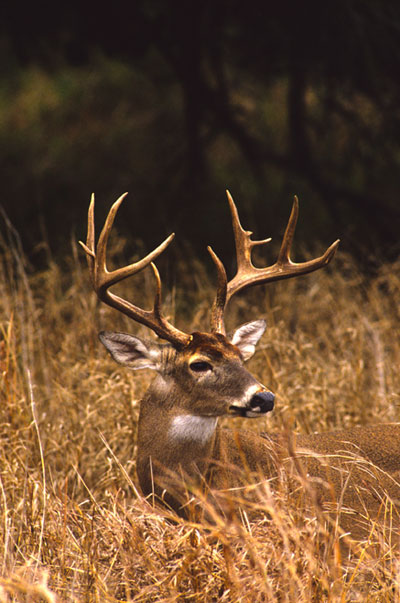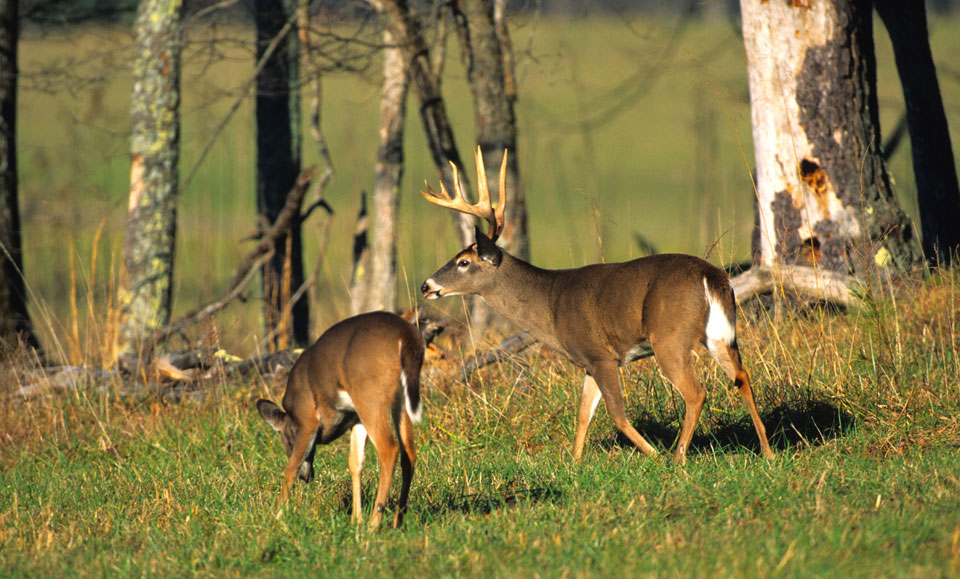Bob Humphrey
There are certain topics we revisit on a regular basis and this is one of them. Call them what you want, antler point restrictions (APRs) or mandatory antler restrictions (MARs), they have become increasingly more popular and widespread over the recent past. And though many programs are fairly recent, others have been around long enough that we’re starting to see some of the successes and failures and take a more objective look at the pros and cons of each.

Paradigm Shift
One of the more famous and perhaps infamous antler restriction efforts occurred in Pennsylvania. The Keystone State was on the verge of an ecological disaster with an annual buck kill consisting of 85 percent yearlings and widespread habitat degradation. The initial proposal was actually more of an effort to dramatically reduce the overall deer population, but getting Pennsylvania’s 550,000 deer hunters to buy-in would take nothing short of a paradigm shift. So the Game Commission offered a carrot, a positive side effect in the former of antler restrictions and the resulting improved buck age structure.
Both worked. It started as a three-year experimental program involving adjustments to the buck and doe seasons and mandatory antler point restrictions. Initially it resulted in a dramatic increase in doe harvest and a decrease in buck harvest. The proportion of yearling bucks harvested went from 90 to 67 percent in three years, and by 2012 was down to 48 percent. In 2015 it was down to 41 percent.
Opponents claim the newer regulations have devastated the deer herd by allowing too many does to be killed. Meanwhile, Pennsylvania still remains among the top five states in terms of total antlerless harvest and antlerless harvest per square mile, with hunters killing nearly 180,000 antlerless deer or four per square mile in 2015. Many also criticize the lack of opportunity, and no longer being able to shoot the first buck they see. That’s certainly true, but more hunters are killing more older, bigger-racked bucks in a state where many previously never laid eyes on a mature buck with a decent rack.
Majority Rules
Recognizing the natural resistance to anything new, Michigan took an interesting approach and established a policy requiring that a clear majority (66 percent) of both hunters and landowners support MARs before any implementation. Proposed regulations are then submitted for approval by the Natural Resources Commission and if approved are implemented for a five-year period. Meanwhile, biologists are required to collect data to evaluate the impact.
During the late 1990s they implemented restrictions in several Deer Management Units, calling for a minimum of three points on one side in some areas and in others, two or more points on one side, each of which must be one or more inches in length.
Most of the initial results were positive. The deer kill stabilized at a level slightly above the three-year pre-restriction average. The number of yearling bucks in the harvest declined by roughly 40 percent, while the proportion of older bucks increased by 300 percent. Meanwhile, the average number of points increased from 5.2 to 6.9, and average beam lengths increased from 20.9 to 24.1. Despite this, subsequent support fell below the 66-percent acceptance level required to keep antler restrictions in place so they were abandoned.
Today, Michigan remains among the top states in terms of total kill and remains among the top ten in terms of percentage of yearling bucks in the harvest. Only 27 percent of the buck harvest is 3 or older, which is about average for both the Midwest and Northeast. The potential exists to improve both age structure and buck quality, but if the majority of people oppose the means to accomplish that, it doesn’t matter.
Not What it Seems

Mississippi saw some of the earliest MAR experiments on public land in 1988. Initial results were mostly positive, showing the proportion of yearling bucks killed dropped from nearly 50 percent to 23 percent in the first year, and subsequently leveled off at around 10 to 12 percent. Mississippi now ranks among the highest in the nation in terms of proportion of mature bucks in the harvest.
However, researchers from Mississippi State University documented an undesirable side effect. Over time, the average antler size of bucks in the 2.5 and 3.5-year age classes declined by an average of 10 inches. The four-point rule resulted in what’s known as “high-grading,” where bucks with the greatest genetic potential for big antlers are harvested at a younger age, leaving only bucks with poorer quality antlers to mature into older age classes. And the effect was greatest in areas of high-quality soils, where yearling bucks have a higher potential of sporting legal racks at a younger age. As a result, the State placed large areas of state-managed lands in the Delta region under more stringent regulations, which include a 15-inch minimum inside spread and a tightly controlled lottery on a limited number of permits for taking bucks with fewer than four points.
These results point out several things. One is the importance of long-term monitoring. It took several years before researchers identified the high-grading. It also shows that things are seldom as simple and clear-cut as we might like them to be. It’s not just a matter of protecting younger bucks to produce older ones. When managing wildlife populations you need to consider numerous variables like habitat, hunting pressure and annual weather and climate variation, to name a few.
A Slightly Different Approach
Texas is exceptional in so many ways, particularly when it comes to deer management. There are probably more diverse antler restriction programs in Texas than in all other states combined, due in large part to the pattern of private land ownership and management. A lot of folks own or lease large tracts where they can more precisely control deer herd dynamics. Public land is a different story.
Recognizing some of the potential pitfalls of MARs, Texas Parks and Wildlife tried a slightly different approach in the Post Oak Savannah region of southeast Texas. The concept was well accepted as interest among hunters and landowners was already high. With a dual goal of improving age structure and increasing hunting opportunity, they instituted a slot limit wherein a legal buck had to meet at least one of three criteria: 1) one unbranched antler, 2) a minimum 13-inch inside spread, or 3) at least six points on one side.
This system offered several advantages. The one unbranched antler criterion allowed for removal of cull bucks where other systems do not. Though culling spikes has proven largely ineffective and often unnecessary in most areas, Texas research has shown some positive effects on antler quality in poor quality habitat. The other two restrictions were to protect nearly all healthy yearling deer, and many in the 2.5-year age class that showed good antler development, effectively avoiding high-grading.
The proportion of yearling bucks harvested dropped from a previous ten year average of 52 percent to 36 percent after the first season of restrictions, then to 28 percent the next season. Meanwhile, the proportion of 3.5-year-old bucks jumped from 16 to 25 percent the first season and 33 percent the second. And the proportion of 4.5-year-olds (4 percent under pre-restriction hunting), rose to 22 percent in the first two years. Landowners and hunters in the six-county area were ecstatic.
But again, no system is perfect and time often highlights flaws. Researchers began noticing that hunters seemed reluctant to “burn” their tags on spikes, particularly after observing the improved antler quality and availability of mature bucks. The simple solution was to allow hunters two bucks, one of which must have one unbranched antler.
Mixed Gains
Georgia was the first state to adopt county-wide antler restrictions - in Dooly County in 1993. Increased interest from other counties led the establishment of criteria similar to Michigan’s, including at least 66 percent approval by local hunters and landowners. This, in turn, led to eight other counties being included under some type of restriction. In 2002 the legislature enacted a statewide regulation that one of the two antlered deer allowed “must have a minimum of 4 points, 1 inch or longer, on one side of the antlers.”
Currently, those restrictions remain in Hancock, Harris, Meriwether, Montgomery, Randolph, Talbot and Troup Counties, while in Dooly and Macon Counties antlered bucks must have a minimum outside antler spread of 15 inches. Despite this, the proportion of yearlings in the Georgia buck kill (45 percent) is almost double the southeast average (24 percent), and the proportion of 3-1/2 or older bucks killed (28) is nearly half the southeast average (51 percent).
Still, according to Georgia DNR assistant chief of game management John Bowers, the 15-inch outside spread rule protects 100 percent of the 1-1/2-year-old bucks, 33 percent of the 2-1/2-year-old bucks and 0 percent of the 3-1/2-year-old bucks. That works for me.
 Some Are Working
Some Are Working
Arkansas enacted a statewide three-points-a-side rule in 1998. Since then, the percentage of yearling bucks in their harvest has dropped from roughly 49 to 7 percent - lowest in the nation in 2015. The same year they led the southeast and ranked third in the nation (behind Texas and Mississippi in terms of proportion of mature bucks harvested), with 74 percent. Despite this, recent hunter surveys have shown strong support for even more stringent restrictions. I guess it’s the American way: If some is good, more is better. I prefer: If it ain’t broke, don’t fix it. Meanwhile, there are other places where the system is “broke.”
Maine Help Me or Help me Maine
I use the example of Maine because it provides some interesting perspective, and it’s where I hail from so it’s most familiar to me. The concept of antler restrictions is still relatively new up here, but is rapidly gaining popularity, and each year more bills are submitted in the legislature proposing some type of restriction to help save a deer herd that, for the most part, has continued to diminish in both quantity and quality for more than two decades.
Maine hunters killed 38,153 deer in 2002, in 2005 28,148 we harvested and 23,512 in 2016. That’s the statewide total, for all seasons combined! Meanwhile, Maine has consistently ranked among the top states in the nation in terms of proportion of yearlings in the buck harvest. It was Number 1 in 2012 with 62 percent, tied for second in 2013 with 53 percent and Number 3 in 2015 with 48 percent of all bucks harvested being yearlings. In this modern age of enlightened deer management those numbers are abysmal. It’s not surprising then that, seeing the success of antler restrictions elsewhere, more Mainers would like to see them applied here.
Former Maine deer biologist Gerry Lavigne is well known both for his vast knowledge of and dedication to the resource and for being outspoken. In an essay he wrote for the Sportsman’s Alliance of Maine, Lavigne stated, “Under a 3-point harvest restriction, at least 75 percent of the 6,100 yearlings we now harvest each year in Maine would be passed up and allowed to remain in the population.”
At first glance that sounds pretty good, exactly what we’re hoping to accomplish. He continues, “In reality, however, relatively few of these, approximately 4,600 yearlings, would survive to become a mature buck three years hence. A significant number of yearlings with smaller racks will be accidently shot... Some non-qualifying bucks will be deliberately shot and sneaked home by defiant meat hunters. Those young bucks that do survive must contend with 3 more years of ongoing winter mortality, road-kill, predation, poaching, and other non-hunting losses before they can show up in a hunter’s sights as a big strapping four-year old.”
To further illustrate his point, Lavigne constructed a harvest model, using realistic population and harvest attributes for Maine and found, “The results, after 5 years of statewide implementation of this antler point program, were disappointing.” Under Lavigne’s model, total buck harvest would drop from 14,000 to 12,700, a pattern that would persist indefinitely. “Under this scenario, we would ultimately gain only 400 additional mature bucks over the 2,400 we currently harvest. That’s about 1 mature buck for every 2 townships in Maine. Not exactly a major gain in the harvest of mature bucks,” he says. Lavigne is correct in that assertion, but his overall argument is flawed.
Mainer’s aren’t looking to replace yearling bucks with mature bucks. They merely want to shift that mortality to the next age class. Lavigne even admits: “Antler point schemes do not reduce excessive hunting pressure (or mortality rate) on antlered bucks. They merely shift that pressure to the next available age or size class.” And as a result of antler point restrictions, “... there will be more 2-year-olds available.”
In Maine, a two year old buck will weigh somewhere between 150 and 190 pounds (190-240 pounds live weight) and generally sport antlers in the mid 120 - 130 inch range. I don’t know about you, but I’d be pretty happy with having more of those around. It might even prompt me to be a bit more conservative and hold out for a three year old that will in all likelihood qualify for the Maine Antler and Skull Trophy Club’s 140-inch minimum.
In fact, antler restrictions might just reverse a recent trend that has been highlighted by the MASTC records. For decades, Maine’s top end bucks - those with the biggest racks - came from the top end of the State - remote, lightly hunted regions of northern Maine. In addition to big racks they also sported massive bodies, often dressing out well over 200 pounds, both the results of them being legitimate mature bucks. But over the last decade or two an increasing number of record book bucks are coming from southern and central Maine, more populated areas with heavier hunting pressure. And the top end has gone down because far fewer of these deer have reached that magical age four. Due largely to heavy hunting pressure they were killed before they had a chance to fully realize their genetic potential for antler growth.
However, traditions in Maine die harder than a wounded crocodile. For many, the traditional hunting method is to “walk up” a deer, jumping it and then letting the lead fly as soon as they see hard antler. Antler restrictions would require them to first size-up their target and determine if it is a “legal target” before shooting. By then, in the dense Maine woods, it would be gone. Furthermore, many folks are interested more in meat and less in antlers, and in a state where barely over 10 percent of hunters are successful, it would be tough to deny them any opportunity. It’s unlikely Maine will see any type of state-sanctioned antler restrictions any time soon. But it’s more likely private landowners will implement them on their own and as a result, limit or prohibit public access in order to better protect their investment.
A Dark Cloud

The foundation of MARs and the “Let them go so they can grow” philosophy is protecting a single age class, yearling bucks. After that, programs sometimes vary diversely. Regardless of the details, most public land hunters are pleased as pie with more two and three year old bucks, and private land owners and managers can protect deer in those age classes if they so choose. Sounds good, right? Maybe not. Some recent research suggests this philosophy could have potentially dangerous consequences.
Between 2001 and 2005, Associate Professor of Wildlife Ecology, Duane Diefenbach, headed a collaborative research project conducted by Pennsylvania State University, the Pennsylvania Game Commission (PGC) and the U.S. Geological Survey. As part of the PGC’s evaluation of changes to the state's deer population resulting from antler restrictions designed to protect that age class, Diefenbach and others looked at yearling buck dispersal. Quoted in a Penn State News article, Diefenbach said, "We learned that 70 percent of yearling males will disperse, and the average dispersal is six to seven miles. Depending on the amount of forest on the landscape, those yearling males may go just a mile or as far as 30 miles."
Countless other studies have also documented the phenomenon of yearling buck dispersal so at first glance results of the Pennsylvania study were not at all surprising. But in the time between when the research concluded and results were published, CWD showed up in New York, West Virginia and Maryland, and subsequently in three Pennsylvania counties. As a result, Penn State researchers are now using Diefenbach's results to model how and where the disease might spread in Pennsylvania.
We’re just now beginning to understand how the prions that cause CWD might be spread by deer so empirical results are a ways off, but we can draw several conclusions. Yearling bucks disperse more than older age classes. Antler restrictions protect yearling bucks so there are more of them, which means more deer dispersal. “If” (and it’s a big if) these younger bucks can carry prions with them, then protecting younger bucks could actually increase the spread of CWD. Sorry to end on a dark note, but let that sink in for a while as you sit on your deer stand this fall.




























